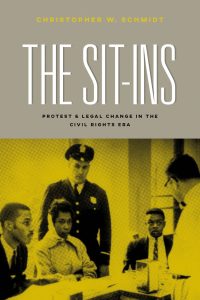From the Law and History Review:
The lunch counter sit-in movement of 1960 was a contest not only over nondiscriminatory access to public accommodations, but also over the role of the courts in the developing civil rights movement. The students who launched the sit-ins explicitly defined their protest as an alternative to litigation-based reform tactics. Leading civil rights lawyers, in contrast, urged the students to rely on the judicial process. White business owners and local officials also divided over whether criminal prosecution of the protesters would best serve their interests. These divergent attitudes toward the courts derived from differences of strategy and ideology. They were also affected by developments in Fourteenth Amendment doctrine: by 1960, whether the non-discrimination principle of Brown v. Board of Education reached (or would soon reach) privately owned public accommodations was an open question. Conflict over the appropriate role of the courts ultimately worked to the students’ advantage. It contributed to their collective identity as a protest movement, helped secure outside support, and divided their opponents. Attention to the expectations diverse people placed upon the courts offers a vehicle for charting the ways law and perceptions of law shaped the sit-in movement at various levels — in the streets as well as the courts, among laypeople as well as lawyers and judges. This approach suggests new insights into the intersection of formal legal change and social movement mobilization.


